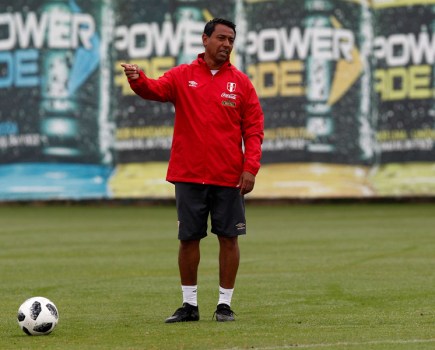The Copa Libertadores may miss a marketing trick by not staging a draw ceremony for its knock out stages. But the fact is that there is simply no time for such fripperies.
South America’s premier club competition is squeezed into the first half of the year. Throw in the distances and difficulties of travel in South America (not to mention the huge journey up to Mexico) and it becomes apparent why the Libertadores does things differently. The clashes in the knock out stage are dictated by the performances of the teams in the group stage – not just in the second round, staged over the next two weeks, but all the way to the final. One alteration to the schedule is possible – should two teams from the same country make it through to the last four, they will automatically meet in the semi finals. That eventuality aside, the 16 remaining teams have already effectively been separated into two halves – and the difference between the two is especially fascinating.
In the late 90s, the second half of the South American club year was devoted to two cup competitions – The Mercosul, for those in the south, and the Merconorte for the north. That separation has now re-emerged.
One half of the competition is entirely comprised of teams from the south; Boca Juniors, River Plate and Racing from Argentina, Cruzeiro, Sao Paulo and Corinthians from Brazil, Guarani from Paraguay and Wanderers from Uruguay.
The other half, it is true, contains a trio of southern intruders – Estudiantes and the Brazilian pair of Internacional and Atletico Mineiro. The rest, though, are all from the north – the Colombian duo of Santa Fe and Atletico Nacional, Emelec of Ecuador and Tigres of Mexico, who would seem to have a foot and a half in the last eight after winning last week’s first leg 2-1 away to Universitario Sucre of Bolivia.
This adds a fair bit of spice to what is already turning into a intriguing version of South America’s premier club competition.
The south has a near monopoly on the title – the only time in the last decade that the trophy went north is in 2008, when LDU of Ecuador were shock winners. In this ten year period the only other finalist from the north was Chivas Guadalajara of Mexico in 2010. All the other finals have been all southern affairs.
The giants from Brazil and Argentina are looking strong this year. But they now start eliminating each other – as well as the headline-grabbing Boca-River clash, there are two all Brazilian ties in the current round. There is, then, a glimmer of hope that a serious northern challenger will emerge – Tigres, perhaps, or one of the Colombians, both of whom were impressive in the group stage. The progress of a solid and attractive side from the north all the way to the final would bring a welcome touch of variety to the competition.
Brazil’s performance at the start of the year in the South American Under-20 Championships was so disappointing that it is no surprise that big changes have been made to the squad that will go to the World Cup at the level in New Zealand next month. Coach Gallo has wielded the axe; his list of 26 includes just 9 who went to Uruguay in January.
There has been a complete clear out of the midfielders – which means, hardly surprisingly, that there is no place for Nathan of Atletico Paranaense, who did well at Under-17 level but badly in Uruguay. Much more surprising is the absence of Gerson of Fluminense, a left footed midfielder of undoubted pedigree who was responsible for many of the side’s best moments. Only 17, at the time of the continental under-20 Championships Gerson had yet to make his club debut. Since then, though, he has been a regular first choice in the Fluminense midfield, and has weighed in with some outstanding goals. There is plenty of European interest in him. Why, then, has he been dropped by his country?
It is worth recalling that Gerson is young enough to play in the World Under-20 Cup of 2017. We are talking about a very young man, who may not be the easiest of players to handle. During the tournament in Uruguay it seemed clear that Gallo did not fully trust his young midfielder, and there are reports of a strained relationship between player and coach. And the official line is that in the days leading up the call up, Gallo phoned Gerson a number of times without reply.
But this in itself is an insufficient explanation. Coach and player are both based in Rio de Janeiro. In almost three months since the South American Under-20 Championships, was it really impossible for the pair to meet? Surely, for example, they could have sat down and cleared the air after a Fluminense training session. We may be living in an age of technology, but some conversations can only be had face to face.









